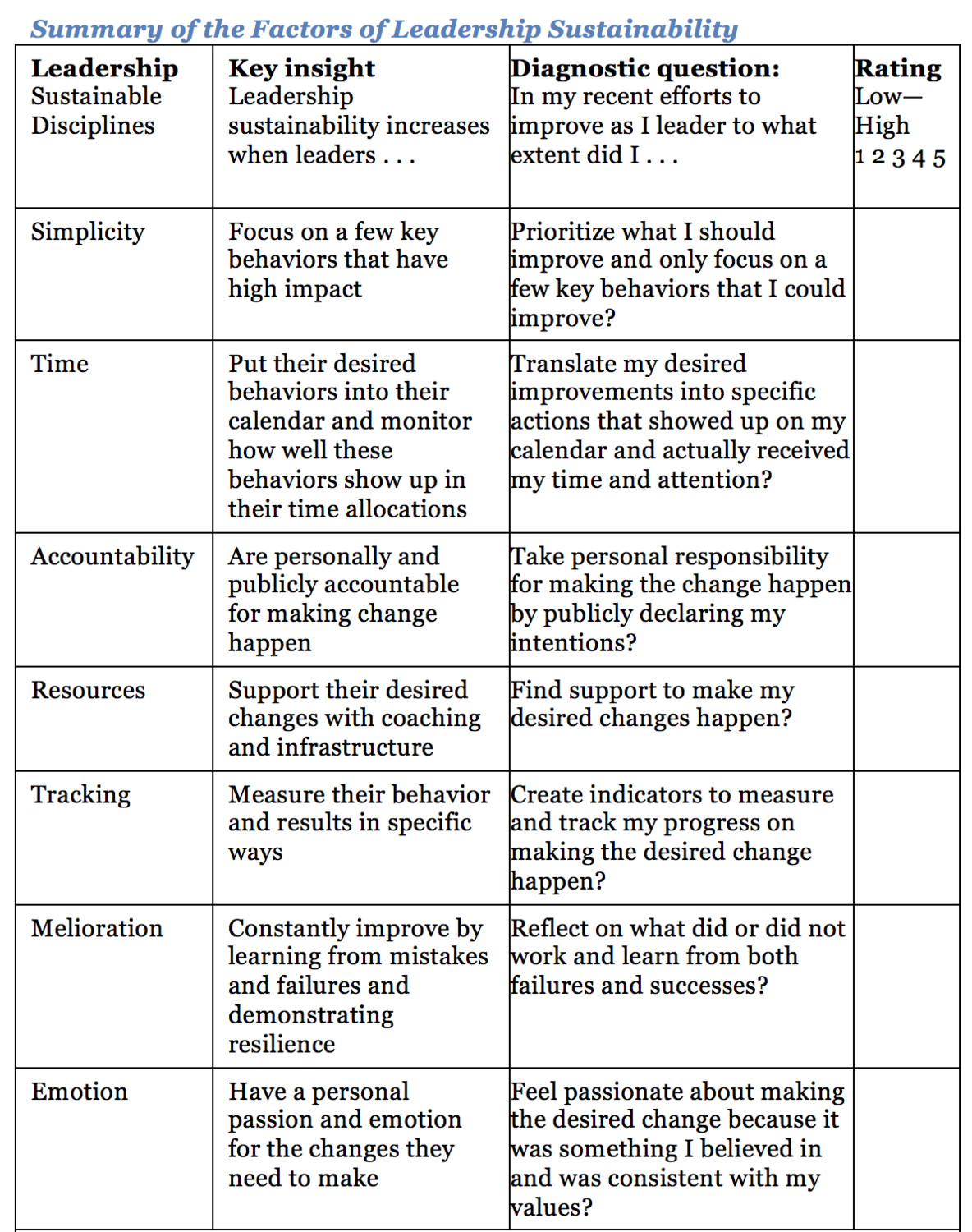Leadership Sustainability: An Approach to Making Sure Leadership Competencies Stick
Most good leaders make earnest attempts to become better through performance management, coaching, individual development plans, and training. But it is clear that the investment in leadership training (as well as coaching, performance management, and individual development plans as well) is not having the impact it could, or should.

Leadership Sustainability: An Approach to Making Sure Leadership Competencies Stick

Imagine this: A group of turkeys attend a two-day training program to learn how to fly. They learn the principles of aerodynamics and they practice flying in the morning, afternoon, and evening. They learn to fly with the wind and against it, over mountains and plains, and together and solo. At the end of the two days, they all walk home.
This old sketch captures current reality. Most good leaders make earnest attempts to become better through performance management, coaching, individual development plans, and training. Through each of these systems, leaders learn what to do to be more effective—and it’s not cheap. An estimated $60 to $80 billion is spent annually on training in the United States alone.
Debate rages about how much of what is taught in leadership courses actually transfers to leadership practice. Some have suggested that knowledge transfer is as low as 10%. Other studies show the number closer to 60%. We estimate that 20% to 30% of ideas learned in leadership training turn into practice. Whichever of these statistics you believe, it is clear that the investment in leadership training (as well as coaching, performance management, and individual development plans as well) is not having the impact it could, or should.
(One of the most important ways to mitigate wasted training is through a series of assessments that measure the core competencies that make leaders truly effective. Learn more about our tested and proved leadership assessments by clicking here.)
So, how do leaders sustain their desired improvements? Most if not all the leaders we work with know the importance of leadership for their organization’s success. Most also want to be better leaders, and this leads them to adopt personal improvement goals, to participate in training and development activities, and to invest in leadership of others in their organization. In leadership workshops or coaching, we often start with three questions:
- On a scale of 1 (low) to 10 (high), how important is leadership either for your personal or organizational success? Most answer 8, 9, or 10.
- What specific things do you need to do to be a more effective leader? Most can quickly write down two or three desired behaviors.
- How long have you known you should improve these behaviors? Most meekly acknowledge that they have known what to improve for three, six, twelve months—or longer (decades for some).
In this simple exercise, we don’t discount the why and what of leadership, but most still don’t see the leadership improvements they aspire to. These improvements may come from a stronger desire to lead better or from being able to upgrade the right skills. But we believe that many leaders are at a point of diminishing returns by focusing only on the why and what of leadership. By shifting attention to the how, leaders emphasize finding ways to sustain desired improvements.
None of the initiatives to improve leadership (training, performance management, coaching) sufficiently transfer to practice. Well-meaning leadership training, individual development plans, coaching, or 360-degree sessions tend to be energizing events, but the energy dissipates quickly. Today’s biggest unmet challenge of leadership is not learning more about what to do, it is learning how to make sure that what is known is done.
To meet this challenge we began by gleaning lessons from a number of diverse fields that surround the concept clutter about this topic. We organize our findings into seven disciplines that spell the mnemonic START ME:
- Simplicity
- Time
- Accountability
- Resources
- Tracking
- Melioration
- Emotion
We think this is apt because for each of us, sustainability starts with me. These seven disciplines turn hope into reality. Leaders who apply these seven disciplines go beyond the why and what of leadership to reach the how.
To get a sense of where you stand now with regard to these seven disciplines, read through the following exercise and jot down a rating from 1 to 5 for each element. A score key follows the exercise.


We are sure we have not captured everything that will increase leadership sustainability, but these seven disciplines inform both personal efforts to be a better leader and organizational investments in building better leadership. When leaders make commitments to change something in training, coaching, or performance management, the impact increases when participants attend to these seven disciplines as they anticipate how to turn learning into action. When an aspiring leader receives 360-degree feedback, the personal action plan will be more sustainable when it embodies these insights. When an organization’s leadership development plan is reviewed, executives increase confidence that leadership investments will have payback when they rigorously apply the seven disciplines.
Leaders matter. Leadership matters more. Leadership sustainability matters most. Do not walk home.
Want to understand your true leadership strengths and your opportunities for growth? Learn how you measure up to the standards of great leadership through our leadership assessments.
Research for this article is drawn from the book Leadership Sustainability: Seven Disciplines to Achieve the Changes Great Leaders Know They Must Make by Norm Smallwood and Dave Ulrich.


